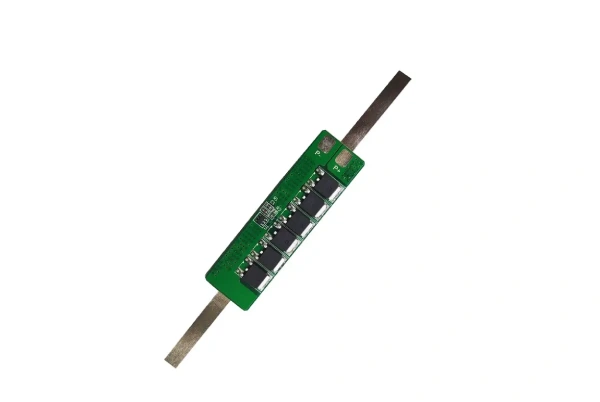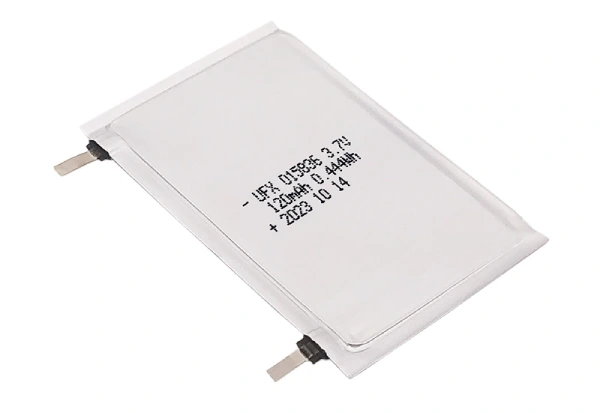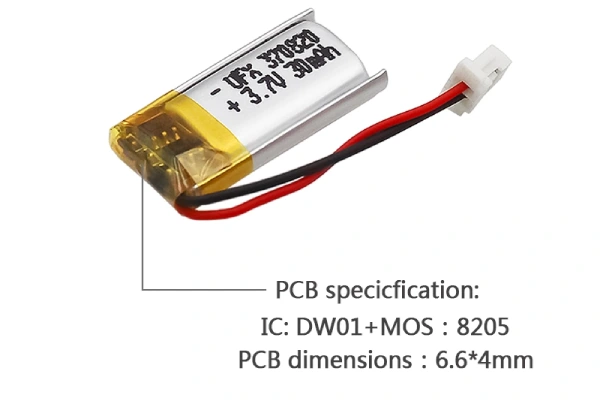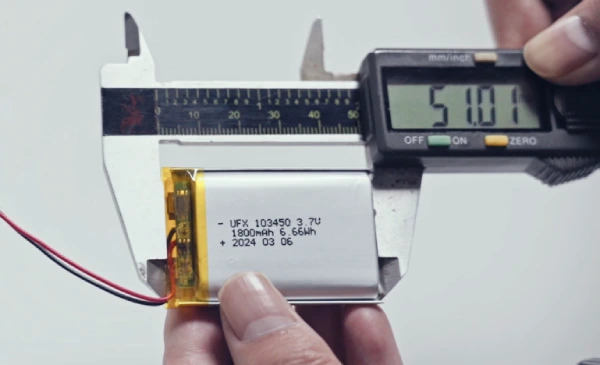Recently, after browsing the battery parameters on our website, some customers found that some are protected batteries and some are unprotected batteries. What is the difference between them? Today, we will talk to you about the battery protection board!
Part 1. What is a lithium battery protection board?
PCB or PCM is a protection circuit board that plays a protective role and mainly comprises electronic circuits. The battery PCB can accurately monitor the voltage of the battery cell and the current of the charging circuit in an environment of -40°C to +85°C and control the opening and closing of the current loop promptly.
Ordinary lithium battery protection boards usually include control ICs, MOS switches, resistors, capacitors, and auxiliary components. The control IC controls the MOS switch when everything is normal, so the battery core is connected to the external circuit. When the cell voltage or circuit current exceeds the specified value, it immediately controls the MOS switch to turn off to protect the cell’s safety.
Part 2. What are the functions of a lithium battery protection board?
As the name suggests, the lithium battery protection board protects the lithium battery. The lithium battery protection board has four major functions: overcharge, over-discharge, over-current, and reverse connection protection.
1) Overcharge protection function
The overcharge protection function of the lithium battery protection board means that when the lithium battery reaches a certain voltage, it is prohibited from charging by the charger. The MOS tube about to control overcharge enters a shutdown state and stops charging.
2) Over-discharge protection function
The over-discharge protection function of the lithium battery protection board is to stop discharging the load when the battery voltage becomes low. The lithium battery protection board will control the over-discharged MOS tube to enter a shutdown state and prohibit discharge. This process is exactly the opposite of the action during overcharge detection.
3) Overcurrent protection function
The overcurrent protection function of the lithium battery protection board is to stop discharging the load when consuming a large current. The purpose of this function is to protect the battery and MOS tube and ensure the safety of the battery. After over-current detection, the battery will return to normal after being separated from the load and can be charged or discharged.
4) Short circuit protection function
The short-circuit protection principle of the lithium battery protection board is similar to the over-current protection principle.
Part 3. Why do lithium batteries need PCB?
Adding PCB to the battery is for user safety. Lithium batteries have safe discharge, charging, and overcurrent limits. The PCB is added so these values do not exceed the safe range when using lithium batteries.
It is worth reminding that when charging lithium batteries, it is best to choose a charger with overcharge protection. For example, the upper limit of the safety voltage of a lithium battery is 4.25V. If no PCB is added, the battery will continue to charge when using a charger without overcharge protection. At this time, the function of the lithium battery protection board is to stop charging when the lithium battery is fully charged.
The principle of discharge and overcurrent detection is also the same. Therefore, the protected battery can control the lithium cell within the specified working environment.
Part 4. Why do some batteries have no PCB?
Lithium batteries with PCB also have the following disadvantages:
- The PCB will occupy a certain amount of space and increase the size of the battery.
- PCB will increase the weight of the battery.
- Due to the addition of PCB, the discharge capacity of the battery may also be reduced accordingly.
- Costs have increased.
Many high-power devices in life, such as electronic cigarettes, model aircraft, electric vehicles, etc., require a large current power supply. Because these devices are easily overcharged and discharged, battery life is relatively low. At the same time, the batteries of some devices are small, and conventional high-power PCBs, such as electronic cigarette batteries, are too large.
However, ultra-low internal resistance battery PCB is very expensive. To reduce battery discharge loss and improve cost performance, this kind of battery generally does not add PCB but chooses to provide battery protection function on the powered device.
Part 5. How to identify whether a lithium battery has a PCB?
5 tips to identify whether a lithium battery has a protection board.
1) Observe the battery surface
Some lithium batteries will have words or icons such as “Protect” and “PCM” on the surface. These all mean that the battery has a protective plate. However, some battery manufacturers may omit these logos to pursue simplicity and beauty. Therefore, just observing the surface of a lithium battery cannot be 100% sure whether the battery has a PCB.
2)Battery Identification
If the battery package has words such as “ICR,” “IMR,” and “INR” printed on it, it usually means that the battery does not have a protective plate. If the words “ICP,” “Protected,” “PCB,” etc., are printed on it, it means that the battery has a protective plate. However, some unscrupulous merchants will deliberately fake their logos, so you need to be careful in your judgment.
3) Check the battery manufacturer’s website
You can check the product introduction or technical parameters on the manufacturer’s website to confirm whether the battery has a protective plate. It will usually indicate whether it has a protective plate. In addition, reputable brands will usually identify the model and brand of the protective plate on the bottom of the battery or the battery packaging. If there is a warranty when purchasing, you can check the authenticity.
4) Use calipers to measure the battery length
For example, the length of a protected 18650 battery is generally greater than 65mm. The length of a protected 18650 battery is generally 69-71mm. (When using metal calipers to measure the battery length, please put insulators such as paper on the positive and negative electrodes to avoid safety accidents)
5) Calculate the battery discharge rate
To maintain high current discharge, most power batteries do not have protective plates. You can determine whether the battery has a PCB by calculating the battery’s discharge rate (discharge current/rated capacity = discharge rate).
For example, an 18650 battery has a rated capacity of 2600mAh and a continuous discharge current of 30A. The discharge rate is about 11C, which is a power battery (the discharge rate is around 10C and above). Therefore, the battery does not have a PCB. (Note: This method is mainly for power batteries)
Part 6. How to identify the quality of lithium battery PCB?
When judging the quality of lithium battery PCB, we can ask the following questions:
- Whether the lithium battery PCB has a product certificate, whether the production date of the PCB can be found, and whether it has undergone safety testing.
- Whether the functions of the lithium battery PCB are comprehensive, whether the signal transmission is smooth, whether the background processing is complete, whether the operation of the battery pack can be monitored and controlled in real time, whether it can be managed in batches, modify instructions in batches, etc.;
- Whether the life cycle of the lithium battery PCB is guaranteed, and whether the after-sales service is timely, etc.
Part 7. Summary
Not all batteries currently on the market are protected batteries. When buying lithium batteries, you can decide whether to buy a protected or unprotected battery according to your needs. At the same time, it is necessary to identify the quality of the PCB because this is crucial to the quality and safety of the battery.
Related Tags:
More Articles

How to Choose the Best Floor Scrubber Battery for Commercial Cleaning?
Selecting the ideal floor scrubber battery ensures a long runtime, rapid charging, and minimal maintenance for efficient commercial cleaning operations.
Battery for Blower vs Battery for Leaf Vacuum: Which One Should You Choose?
Battery for blower vs leaf vacuum—learn the key differences in power, fit, and runtime to choose the right battery for your outdoor tool needs.
How to Choose the Right Battery for Blower?
Choosing the right blower battery? Consider voltage, capacity, chemistry & usage. This guide helps match the best battery for peak performance.
How to Choose the Best Insulated Battery Box for Lithium Batteries?
Choosing the Best Insulated Battery Box for Lithium Batteries? Discover key factors such as size, material, and safety for optimal protection and performance.
7 Critical Elements on a Lithium Battery Shipping Label
What must be on a lithium battery shipping label? Learn 7 key elements to ensure safety, legal compliance, and correct handling across all transport modes.







